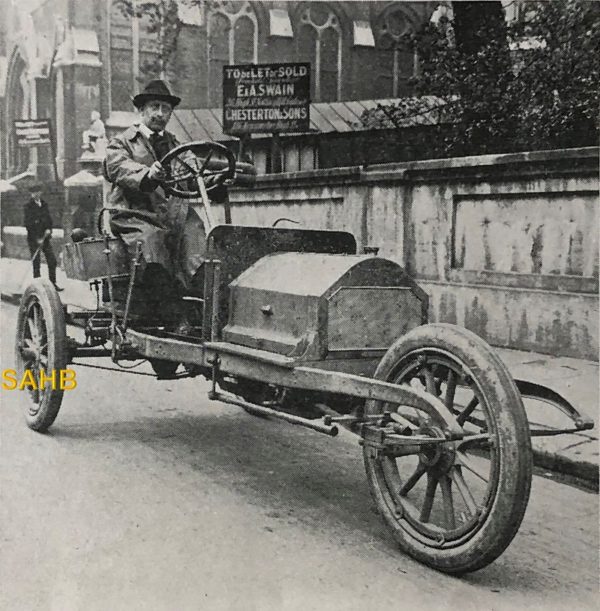
This vehicle is curious enough to have attracted some attention in British and German periodicals in 1910. It was a Jackson car built by R. Reynold Jackson & Co., Ltd. in Notting Hill. Its odd 3-wheeled layout was designed specifically for use in Costa Rica – where roads at the time were said to be so rutted as to make it practically impossible to steer a four-wheeled car. The single front wheel was supposed to make the car easier to steer in such conditions.
Robert Reynold Jackson (1871-1947) was born in Ipswich. He first appears in the motor industry in 1900 as the secretary of the Yorkshire Motor Car Manufacturing Co in Bradford. In 1900 he moved to London and imported American cars – mainly the Buckmobile, Century and Covert makes. By 1903 he had established R. Reynold Jackson & Co. and was manufacturing cars under his own name. These were probably largely made from parts imported from Lacoste & Battmann, with De Dion-Bouton engines. Jackson followed some strange ventures into cars with unconventional single-cylinder long-stroke engines – so long that the driver had almost to peer around the bonnet – such as the 1909 Black Demon racer with engine dimensions of 104 x 213 mm under a slipper-shaped bonnet coming to a sharp point. Otherwise, the company produced perfectly normal vehicles: photos of a 1907 dog-cart with De Dion power and a 1909 doctor’s car with a four-cylinder Aster engine were typical products for the time.
And then came the Costa Rica car. A British magazine merely commented on its ability to operate where no metalled roads existed, and that fifty examples were to be delivered. A German magazine, however, attempted to explain the physics of such rutted roads. Their conclusion had some logic: the ruts from four-wheeled vehicles were so deep that two steered wheels could not climb out of them when turning. The central wheel could rest upon the ‘mound’ in the middle and therefore steer the car. They did, however, admit that a car with a single front wheel far out front would lack stability at higher speeds.
It all seemed rather tenuous – but an order for fifty cars is an order for fifty cars, not to be sneezed at.
Photo courtesy of The Richard Roberts Archive.







Leave a Comment